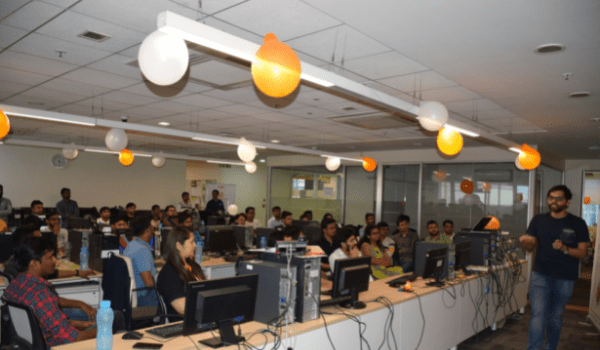Quick Heal Technologies, the Indian cybersecurity software company, works in a very niche market. This makes it difficult for it to acquire 100 per cent ready talent. Why? The main reason is that, in India, there are very few universities and institutes that impart functional knowledge related to cyber security threats. Second, it is not wise for any company to keep on buying talent in a skill area, which is scarce, as the cost is too high. Therefore, the Pune-headquarter company decided to build a talent pool rather than buy talent from external sources. As per Reetu Raina, CHRO, Quick Heal, the firm gets 80 per cent ready talent from the market — talent that is 80 per cent prepared for the job domain they are required to work in.
Threat research
There are three major roles at Quick Heal where upskilling takes place. First is, threat research. As revealed by Raina to HRKatha, for the role of threat researcher, it is not the technical skills that people lack, but the functional skills. “In this role, it is very important for the individual to have threat-analysing capabilities. One need to know the kind of cyber-attacks that can happen and from where,” shares Raina.
Infra-cloud development
The second key area where upskilling happens at Quick Heal is Infra-cloud developing. As the Company also provides cloud services in the cyber-security space, it needs cloud developers and architects to build such platforms. There is talent available in other similar industries, such as professionals from the IT and tech space in MNCs, such as Amazon. However, Quick Heal works in a space where requirements in the infra cloud space keep changing and evolving. Therefore, upskilling in this area is a more effective strategy.
Network security
Another role where major upskilling happens is the Network Security function. Raina admits that the Company acquires most of the talent in this area from the telecommunication space. “People coming in from the telecommunication sector possess knowledge of creating networks. Here, however, one requires to protect and secure the network,” tells Raina.
L&D interventions
Raina shares that there are two key learning and development (L&D) interventions which help the Company upskill its workforce — certificate courses and micro-learning sessions.
Certification courses: The first intervention is in the form of certification courses in cyber security, cyber-crime investigation, network security and so on. These courses may be four to 12 weeks long, depending on the requirement of the employees. For such courses, the Company has tied up with universities and institutes.
“In this new age of learning, we have aligned the learning and development goals of the individual directly with business success”
Reetu Raina, CHRO, Quick Heal
Though Quick Heal does not hire too many freshers, it has collaborated with institutional bodies, such as the Chitkara University, which offer courses suited to the requirements of the Company. Quick Heal then hires batches of interns from the university, who further go on to be upskilled and readied to take up roles.
Those who enrol for these certification courses need to take tests before finally qualifying for their respective roles.
Micro learning sessions: Another intervention that Quick Heal has recently launched during the pandemic is micro learning sessions. Since the Company has been building talent for a long time now, there are some very senior professionals in the workforce who have now become subject matter experts. The Company ensures they transfer their skills and talent to others. With the help of external vendors, the Company organises lectures and short talks which are conducted by these subject matter experts. “We also allow learners to express whatever they have learned,” asserts Raina.
These L&D interventions have really worked for the Company and are helping build talent internally rather than resorting to external buying at a high cost. The Company also measures the impact of these L&D activities by analysing the time taken to develop products and finish projects and also analyse the quality of products over time.
“In this new age of learning, we have aligned the learning and development goals of the individual directly with business success,” mentions Raina.
“Almost 60 per cent of the population at Quick Heal goes through the above-mentioned learning programmes every year,” adds Raina proudly.
Quick Heal spends a lot of time and money to upskill its talent. So, it is obvious that it has to make extra efforts to retain this talent for longer periods. “At Quick Heal, the compensation ratios for this set of people are very different from others. Also, we help this talent design their career path and offer them opportunities to grow within the organisation. We do realise that this talent is quite vital and rare for us,” affirms Raina.
Constant efforts made by the Company to retain talent has given positive results. Though the firm did not reveal any numbers, Raina does point out that attrition rate amongst this set of employees is rather less.



